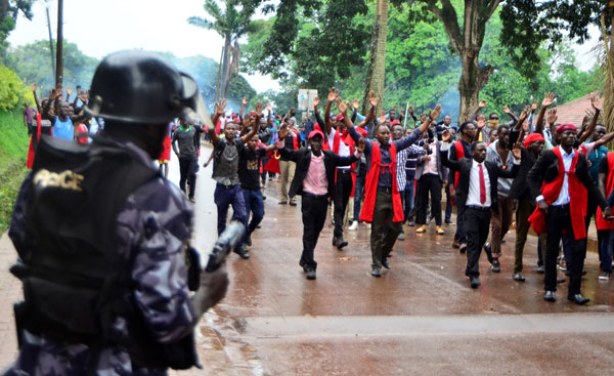Two months ago, top security chiefs convened a high profile meeting at Police Headquarters in Naguru, a Kampala suburb. The meeting had been prompted by intelligence gathered by Internal Security Organization (ISO) along with Uganda Police in relation to a series of meetings conducted by opposition chief Robert Kyagulanyi aka Bobi Wine together with his strategists and several other radical leaders opposed to government aiming at creating cells in higher institutions of learning particularly Uganda’s top 6 universities.
In the September Meeting, security invited heads of these universities and revealed to them that People Power intended to do to cause commotion at these institutions and make them completely ungovernable.
The University heads who attended the meeting at Naguru learnt that People Power had been using university guild committees to clandestinely build strong cells, allies and also brainwash students so that they could stage fierce protests as well put resistance against security personnel quelling the strikes.
According to details of the intelligence report seen by this website, Makerere University was top on the list, followed by Kyambogo, Nkumba, Gulu, KIU and UCU.
The Robert Kyagulanyi agents specifically targeted most universities in Kampala and the neighboring towns as a strategy make Kampala chaotic, paralyze business and make the whole city ungovernable.
The Naguru meeting further learnt that, at the frontline of these deadly strikes would be girls who would be previously indoctrinated not to fear security. Secondly the girls at the vanguard of the protests would again attract sympathy and countrywide condemnation should they be manhandled or brutalized by security agencies.
Then as the strikes gain momentum, intruders who are radical youth (hooligans) hired by People Power would then orchestrate terror on the communities surrounding these universities.
The aim was to therefore overstretch security as the operatives would be overwhelmed while quelling the student protests at the same time suppressing rioters who would rise after being affected by the strikes.
This mayhem, according to the plans would attract the attention of International Community, Feminist groups, donors and other democracy seeking organizations.
This automatically leaves the regime’s image dented.
Security chiefs at Naguru therefore agreed with university administrations to deploy more informants in the students, their guild committees and other meeting they held to be able to foil any attempts to protest.
Also, the meeting agreed that should the university leadership fail to detect the striking plans, security agencies must be alerted hastily after the demos break out.
Thirdly, security chiefs resolved that which ever agency is deployed at a specific university to quell strikes, no personnel was allowed to use excessive force on the students or even brutalise protesters.
The plan was to engage peacefully the protesters and remove them from the battle lines and ‘keep’ them until sanity is restored.
However, Military Police defied the rules of engagement and brutalized Makerere students leaving the regimes image in shreds.
In fact, its against that backdrop that the Military Police commander who led the Makerere operation until today remains in detention.
(Watch out for part 2 of the security report)
